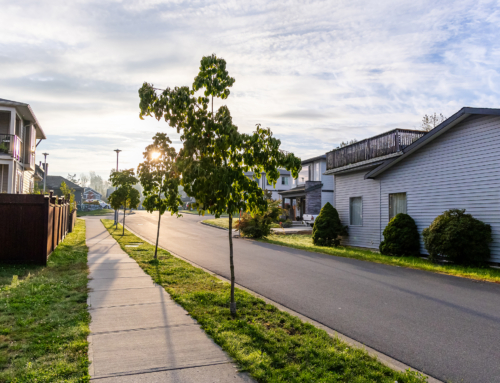Pricing a home is not a guess and it is not only a feeling. It is an evidence based decision that blends data, context, and strategy. You need local comparable sales, you need to understand the active competition that a buyer will see the same day they spot your listing, and you need a plan for how pricing will influence momentum in the first two weeks on market. When sellers take the time to align those three elements, they avoid the two outcomes that cost real money. The first is underpricing without a plan, which leaves equity on the table. The second is overpricing in hope, which turns a good house into a stale listing. This guide walks through the logic of correct pricing for Greater Philadelphia so you can enter the market with confidence.
A good starting point is to anchor on the classic inputs every agent and appraiser studies. Recent closed sales of truly similar homes provide the clearest signal. Active and pending homes show where buyers are shopping today. Adjustments for square footage, lot size, bed and bath count, parking, and condition help align a target range. That is the math. The art lives in understanding how buyers search and how groups of prices behave once a listing goes live. National explainers from consumer focused sites outline these basics in plain language. For a quick overview of the factors and common mistakes, the primer on how to price a home to sell from Zillow is useful. For a professional view of how agents and appraisers weigh features and location against recent sales, the guide to determining an asking price from the National Association of Realtors lays out the core principles. With those baselines in mind, you can apply local nuance that moves results.
Local nuance begins with the way buyers shop on a screen. Most people do not search by a single exact number. They use brackets. A very common pattern is price bands that step up in clean increments. Buyers will often set alerts for bands such as three hundred to three fifty, then three fifty to four hundred, then four hundred to four fifty, and so on. That is why a list price that sits just above a natural break can hide your home from many eyes. If the true value of your home is near four hundred, pricing at four hundred five may push you into a narrower lane while pricing at three ninety nine aligns you with the larger search band below the break. This is not about charm pricing for the sake of it. It is about placement in the channels where the right buyers are already looking.
Condition also behaves like a price input rather than only a lifestyle input. A fresh roof, a young heating and cooling system, and a kitchen or bath that has been updated within the last five to eight years all shift buyer perception. These are not equal in every case, but together they tell a story of reduced near term risk. Buyers tend to pay real money to remove uncertainty. If two homes are the same size on the same block but one has a roof near the end of its life and the other has a roof with a decade left, that difference is visible in offers. The same is true for dated kitchens and baths, older windows, or evidence of deferred maintenance. You do not need to renovate before selling in order to price well. You do need to be honest about how buyers will discount a project list compared to a move in ready alternative.
School district lines, transit access, and micro location within a neighborhood often explain why one sale landed above a range and another landed below. A home that sits inside a high demand elementary school boundary but looks the same as one a few streets away can draw a different pool of buyers and a different set of offers. A home that sits a short walk from a regional rail stop or an express bus line may attract city commuters who will weigh that convenience heavily. Corner lots, block face character, and even the side of the street that gets afternoon light change the way a place feels during a showing. Those small differences add up in closed prices. Study them before you set your number.
Seasonality matters as well. Late spring brings the largest wave of buyers who want to move over summer. Early fall carries a second group that wants to close before the holidays. Winter brings serious buyers who have fewer choices but who still expect fair pricing. None of these seasons are right or wrong for listing. Each one simply changes the way you frame your target price and your momentum plan. In a high choice month you can be aggressive if your home checks many boxes. In a low choice month you can stand out with clean presentation and a number that respects the smaller pool of active shoppers.
Momentum in the first two weeks is where correct pricing earns or loses money. The first wave of eyes includes buyers who have set alerts and have already toured many homes. They know the market as if they work in it. If your price is aligned to the value and the presentation matches the number, that group will book showings quickly and will bring the first offers. If your price is a stretch without clear justification, they will wait. The longer it takes to earn early showings and offers, the more buyers begin to assume the home is overpriced or has hidden issues. This is the spiral you want to avoid. Correct pricing is not conservative. It is calibrated to trigger action among the best informed buyers right away.
A useful mental model is to view price as a signal to each buyer type. There are three common buyer groups. The first is the in market regular who already knows the comps and the inventory. The second is the newly active buyer who is just learning the terrain. The third is the opportunist who makes offers on anything that lingers. You want your price and presentation to speak directly to the first group because that group writes clean offers near asking when the fit is right. The second group takes a bit longer but will engage if you remain visible and reasonable. The third group is not your target at the start. Correct pricing filters for the first two groups and puts you on paths that lead to momentum rather than discount conversations.
Competition is not abstract. It is the set of homes a buyer will click on the same day they click yours. You can see this with your own eyes. Browse live inventory in nearby suburbs and study where similar homes sit right now on Homes for sale in Montgomery County. Notice which ones have fresh photos and a crisp price, and which ones have already marked down. Look for patterns in bed and bath count, parking, yards, and kitchen age. If your home will share a page with those addresses, you are competing with them whether you like it or not. Correct pricing accepts that reality and uses it as leverage. If you can present stronger photos, cleaner copy, and a number that makes obvious sense compared to that list, you will win attention in the first three days, which is where the upside lives.
Correct pricing also anticipates appraisals. When a buyer offers near asking or above asking, their lender will send an appraiser to confirm that the contract price is supported by recent sales. If you have chosen a number that has no peers within a realistic radius, you increase the chance that the appraisal will come in below the contract price. That does not have to kill a deal, but it will create new negotiations about who covers the gap. A strategy that pairs an ambitious but supportable list price with strong presentation lowers this risk. Make sure your agent can hand the appraiser a package of the most relevant comps and a page that outlines upgrades with dates and costs. Appraisers cannot invent value but they can consider documents that place your home in its best and most accurate light.
A common pricing temptation is to build in a cushion for negotiation. Sellers think a higher list gives room to come down later. In many markets that approach now backfires. Buyers are very sensitive to days on market. They watch for reductions and then assume more discounts will follow. The cushion you thought you added at the start converts into a larger discount later. If you want to create urgency and even multiple bids, it is often smarter to set a number that is obviously in line with value and let the market do the lifting for you. You can still hold firm during negotiations when your number has been validated by showings and interest in the first week.
Your pre listing preparation should match the price you want to command. Pricing asks buyers to accept or reject a story about value. Clean surfaces, neutral paint where needed, bright bulbs, repaired hardware, and a yard that is trimmed and raked all play supporting roles in that story. You do not have to stage to the hilt to price well. You do need to eliminate distractions that pull mental energy away from the features that sell a house. Buyers forgive small quirks when the overall experience is calm and bright. They punish small quirks when the home feels neglected or dim. Since pricing is a signal, presentation is a megaphone.
Timing a reduction is part of correct pricing too. If you listed ambitiously and the market did not respond, a decisive adjustment early is healthier than a series of small nudges that keep you in the same band where you already failed to earn traction. Watch showing count, save count, and feedback for ten to fourteen days. If the house is being seen but not bid on, the market is telling you the number is out of tune. When you move, move to a number that places you into the band where your true buyers are searching. Re write the first line of the copy, swap the lead photos, and return to the market with clarity. This reset is far more effective in week three than in week six.
Correct pricing can also include a launch plan that gives local buyers a reason to act quickly. A short window between list date and first showings allows the listing to collect interest before doors open. A few private preview slots for qualified buyers sometimes help. A well timed open house within the first weekend creates a sense that others are looking. None of these tactics matter if the number is wrong. They matter a great deal when the number is right because they create natural comparison and urgency.
In a rising or falling rate environment, pricing requires a steady hand. When rates climb, some buyers lose a portion of their purchasing power. When rates ease, some buyers return to the market and feel more confident. Do not try to chase a daily rate ticker with price moves. Instead, set a number that makes sense with current approvals and the current comp set. If conditions improve while you are on market, momentum will find you. If conditions tighten, you will already be positioned as one of the sensible choices in your band.
Correct pricing is not only a listing day choice. It is an end to end plan that begins with a careful market study and ends with a clean closing. It is a conversation about appraisals, inspections, and buyer psychology. It is a decision about where your home belongs in the group of addresses a family will consider on a single Saturday afternoon. When you stop thinking of price as a label and start thinking of it as the lead actor in your launch, you begin to use this tool the way professionals do.
If you want to sense how your home will read beside the current competition and how to place your number for a strong first week, browse live inventory in nearby suburbs on Homes for sale in Montgomery County and picture your photos and features in that line up. When you are ready to talk through a data backed pricing range, a launch plan for the first ten days, and a strategy for appraisals and negotiation, reach out through Albright Real Estate Contact and we will prepare a full market analysis with recent sales, active competition, and a clear recommendation.








